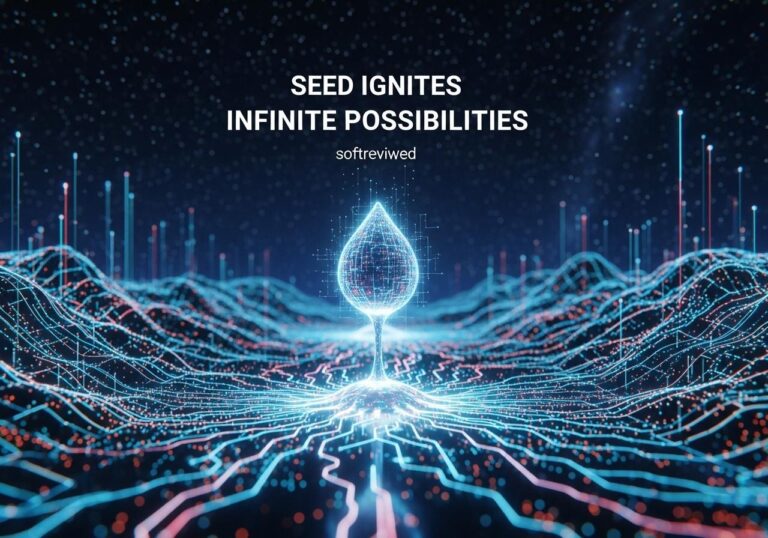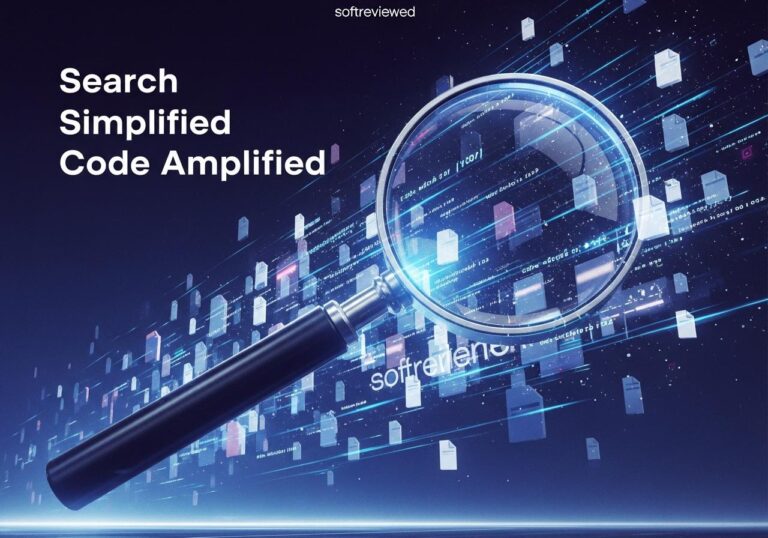ByteDance’s Breakthrough AI: Llama 3.1
Discover how ByteDance is revolutionizing the open-source AI landscape with their cutting-edge Llama 3.1 model, featuring unprecedented capabilities for enterprise and developer use.
512K Token Context Window
Double the length of GPT-5, enabling processing of extremely long documents and complex reasoning tasks in a single prompt. This expanded context window allows for comprehensive analysis of entire books, codebases, or research papers without fragmentation.
Apache-2.0 Open Source License
Free commercial use without API fees or restrictive licensing terms, allowing enterprises to deploy without cost barriers. Organizations can freely modify, distribute, and integrate the model into their products and services without licensing concerns.
User-Adjustable Thinking Budget System
Unique feature enabling users to control reasoning depth from quick responses to deep analytical thinking as needed. This innovative approach lets developers fine-tune the balance between speed and thoroughness based on specific use case requirements.
Optimized for Real-World Deployment
Available in multiple quantized versions (4-bit and 8-bit) for flexible implementation across various hardware configurations. These optimizations ensure the model can run efficiently on everything from enterprise servers to more modest computing environments.
State-of-the-Art Performance
Achieves top results among open-source models across multiple benchmark categories while maintaining practical usability. Excels in reasoning, coding, mathematics, and natural language understanding tasks without sacrificing deployment efficiency.
Strategic Competitive Positioning
Positions ByteDance as a major AI contender challenging established players like DeepSeek and Alibaba Cloud in the open-source landscape. This strategic release demonstrates ByteDance’s commitment to advancing AI technology while fostering an open innovation ecosystem.
ByteDance Shakes Up the AI World with Seed-OSS-36B
ByteDance has just dropped something huge in the AI space. Their newest open-source model, Seed-OSS-36B, packs a massive 512K token context window and comes with zero licensing fees. Released in August 2025 under the Apache-2.0 license, this model is already making waves for its impressive performance and developer-friendly features.
What makes this particularly interesting? ByteDance trained this 36-billion parameter model using only 12 trillion tokens, yet it’s outperforming much larger models on key benchmarks. Think of it like building a sports car with a smaller engine that still beats the big trucks on the highway.
Understanding the 512K Context Window Revolution
The standout feature here is that massive 512K token context window. To put this in perspective, that’s roughly equivalent to 1,600 pages of text – imagine feeding an entire novel into the AI and having it remember every detail.
📌 Real-world impact: You could upload a complete legal contract, research paper, or financial report, and the AI would understand connections between the first page and the last page without losing context.
Most current AI models max out around 128K-256K tokens. OpenAI’s GPT-4 family typically handles around 256K tokens, making ByteDance’s offering literally double the competition. Google’s Gemini 1.5 Pro can handle up to 2 million tokens, but that’s only available to select enterprise customers in limited preview.
Context Window Size Comparison
| AI Model | Context Window | Equivalent Pages | Availability |
|---|---|---|---|
| ByteDance Seed-OSS-36B | 512K tokens | ~1,600 pages | Open-source, free |
| OpenAI GPT-4 | 256K tokens | ~800 pages | Paid API |
| Claude 3.5 Sonnet | 200K tokens | ~640 pages | Paid subscription |
| Gemini 1.5 Pro | 2M tokens | ~6,400 pages | Limited preview |
The “Thinking Budget” Innovation That Sets It Apart

Here’s where things get really clever. ByteDance introduced something called a “thinking budget” – essentially, you can control how much time and processing power the AI spends reasoning before giving you an answer.
Think of it like adjusting the difficulty setting on a video game:
✅ Simple tasks: Set a 512-token budget for quick responses
✅ Complex problems: Allocate 8K-16K tokens for deep reasoning
✅ Mathematical proofs: Use maximum budget for thorough analysis
The AI actually shows its work as it thinks. For example:
“I’ve used 129 tokens and have 383 tokens left. Using the power rule, we can… I’ve used 258 tokens and have 254 tokens left. Additionally, remember… I’ve exhausted the token budget and will now give the answer.”
This transparency is unprecedented in AI models and gives users unprecedented control over the speed-versus-accuracy trade-off.
Performance Benchmarks That Turn Heads
The numbers speak for themselves. Seed-OSS-36B is crushing benchmarks across multiple categories:
Academic Performance Results
| Benchmark | Qwen2.5-32B | Seed-OSS-36B | Performance Gain |
|---|---|---|---|
| MMLU-Pro | 58.5 | 65.1 | +11.3% |
| BBH (Reasoning) | 79.1 | 87.7 | +10.9% |
| GSM8K (Math) | 87.5 | 90.8 | +3.8% |
| MATH | 63.5 | 81.7 | +28.7% |
| HumanEval (Coding) | 47.6 | 76.8 | +61.3% |
The MATH benchmark improvement is particularly impressive – an almost 29% jump in mathematical reasoning capabilities. For coding tasks, the model shows a whopping 61% improvement over comparable models.
Advanced Task Performance
For specialized applications, the instruction-tuned version performs even better:
📌 AIME24 (Advanced Math): 91.7% success rate
📌 LiveCodeBench (Coding): 67.4% performance
📌 SWE-Bench (Software Engineering): 56.0% problem-solving rate
Three Versions for Different Needs
ByteDance didn’t just release one model – they gave us three variants to choose from:
Seed-OSS-36B-Base: The standard version with synthetic instruction data included. Perfect for most general applications.
Seed-OSS-36B-Base-woSyn: The “pure” version without synthetic data. Ideal for researchers who want a clean foundation for their own fine-tuning experiments.
Seed-OSS-36B-Instruct: Pre-trained to follow instructions precisely. Ready for real-world applications like customer service, content creation, and task automation.
This approach shows ByteDance understands that different users have different needs – from academic researchers to commercial developers.
Real-World Applications That Make Sense
With a 512K context window, entirely new use cases become possible:
Legal and Financial Services
- Analyze complete contracts in one pass (typically 30K-50K tokens each)
- Process multiple years of financial reports simultaneously
- Review regulatory filings without losing cross-references
Healthcare and Research
- Examine patient histories spanning decades
- Analyze clinical trial documentation end-to-end
- Process research papers while maintaining context across citations
Software Development
- Review entire codebases for debugging
- Maintain context across complex software architectures
- Generate documentation that understands the full project scope
Content and Education
- Create personalized learning paths based on complete student histories
- Analyze customer journeys across multiple touchpoints
- Generate content that maintains narrative consistency across long documents
The Apache-2.0 License Advantage
This is huge for businesses. The Apache-2.0 license means you can use Seed-OSS-36B for commercial applications without paying licensing fees. Compare this to proprietary models:
Cost Comparison (USD/INR for 1M tokens processed daily)
| Model Type | Daily Cost | Monthly Cost (30 days) | Annual Cost |
|---|---|---|---|
| ByteDance Seed-OSS | $0 ($0) | $0 (₹0) | $0 (₹0) |
| OpenAI GPT-4 | $50 ($4,200) | $1,500 (₹1,26,000) | $18,000 (₹15,12,000) |
| Claude 3.5 Sonnet | $18 ($1,512) | $540 (₹45,360) | $6,480 (₹5,44,320) |
⛔️ Important note: While the model is free, you’ll still need to pay for hosting infrastructure if running it yourself.
Technical Architecture That Powers Performance
Under the hood, Seed-OSS-36B uses proven, stable architecture choices:
📌 36 billion parameters across 64 layers
📌 GQA (Grouped Query Attention) for efficient processing
📌 SwiGLU activation function for better performance
📌 RMSNorm normalization for training stability
📌 RoPE positional encoding for handling long sequences
The model uses a vocabulary of 155,000 tokens, which helps it understand multiple languages effectively. ByteDance specifically optimized it for international use cases, making it valuable for global businesses.
How ByteDance Achieved This with Less Training Data
Here’s the remarkable part: most comparable models require 18-32 trillion tokens for training. ByteDance achieved competitive performance with only 12 trillion tokens. This suggests highly efficient training methods and superior data curation.
➡️ Training efficiency comparison:
- Qwen2.5-32B: 18 trillion tokens
- Qwen3-30B-A3B: 32 trillion tokens
- Seed-OSS-36B: 12 trillion tokens (best performance per training token)
This efficiency translates to lower computational costs for training and suggests the model learned more effectively from its training data.
Installation and Getting Started
Getting Seed-OSS-36B running is straightforward for developers:
from transformers import AutoModelForCausalLM, AutoTokenizer
model_name = "ByteDance-Seed/Seed-OSS-36B-Instruct"
tokenizer = AutoTokenizer.from_pretrained(model_name)
model = AutoModelForCausalLM.from_pretrained(model_name, device_map="auto")
messages = [{"role": "user", "content": "Analyze this document..."}]
tokenized_chat = tokenizer.apply_chat_template(
messages,
tokenize=True,
add_generation_prompt=True,
return_tensors="pt",
thinking_budget=512 # Adjust based on task complexity
)
outputs = model.generate(tokenized_chat.to(model.device), max_new_tokens=2048)Strategic Implications for the AI Industry
ByteDance’s move signals a major shift in AI strategy. By open-sourcing a model that rivals paid alternatives, they’re:
✅ Challenging the “paywall-first” approach of OpenAI and Anthropic
✅ Accelerating innovation through community contributions
✅ Lowering barriers for startups and smaller companies
✅ Forcing competitors to reconsider their pricing models
This follows a trend of Chinese AI companies releasing powerful open-source models while US companies focus on proprietary solutions.
Limitations and Considerations
No model is perfect, and Seed-OSS-36B has some trade-offs:
⛔️ Infrastructure requirements: 36B parameters need significant GPU memory
⛔️ Hosting costs: While the model is free, running it isn’t
⛔️ Technical expertise needed: Self-hosting requires DevOps knowledge
⛔️ Support limitations: Community support rather than commercial SLAs
For businesses without technical teams, managed API services might still make more sense despite higher costs.
The Future of Long-Context AI
ByteDance’s release represents a broader trend toward longer context windows. We’re seeing rapid progress:
- 2022: Most models handled 2K-4K tokens
- 2023: 32K-128K became standard
- 2024: 200K-1M tokens emerged
- 2025: 512K+ is becoming accessible to everyone
This progression suggests we’re moving toward AI that can truly understand and work with human-scale documents and conversations.
Making the Smart Choice for Your Business
Whether Seed-OSS-36B makes sense for your organization depends on several factors:
Choose Seed-OSS-36B if:
- You process large documents regularly
- You need cost-effective long-term AI integration
- You have technical teams to manage deployment
- Data privacy and control are priorities
- You want to customize the model for specific use cases
Stick with proprietary models if:
- You need immediate deployment without setup
- You prefer managed services with support
- Your use cases fit within smaller context windows
- You value guaranteed uptime and SLAs
The Bottom Line: A New Era of Accessible AI
ByteDance has fundamentally changed the game with Seed-OSS-36B. By combining enterprise-level performance with open-source accessibility, they’ve created a model that democratizes advanced AI capabilities.
For businesses, this means you no longer need deep pockets to access cutting-edge AI. For developers, it opens up entirely new possibilities for building applications that can truly understand and work with complex, long-form content.
The 512K context window isn’t just a technical achievement – it’s a glimpse into a future where AI can handle real-world complexity without the artificial limitations we’ve grown accustomed to. Whether you’re analyzing legal contracts, processing medical records, or building the next generation of AI applications, Seed-OSS-36B provides the foundation to make it happen. This innovative capability allows users to delve deeper into nuanced tasks, streamlining workflows and enhancing decision-making processes. Additionally, the minimax m1 model overview offers insights into the model’s architecture and efficiency, ensuring that developers can optimize performance in a variety of applications. As we progress, the implications of such advancements will reshape industries and redefine our interaction with technology.
As the AI landscape continues to evolve rapidly, one thing is clear: the combination of powerful capabilities and open accessibility that ByteDance has delivered with Seed-OSS-36B sets a new standard for what we should expect from AI models. The question isn’t whether this will influence the industry – it’s how quickly other companies will need to adapt to compete.







